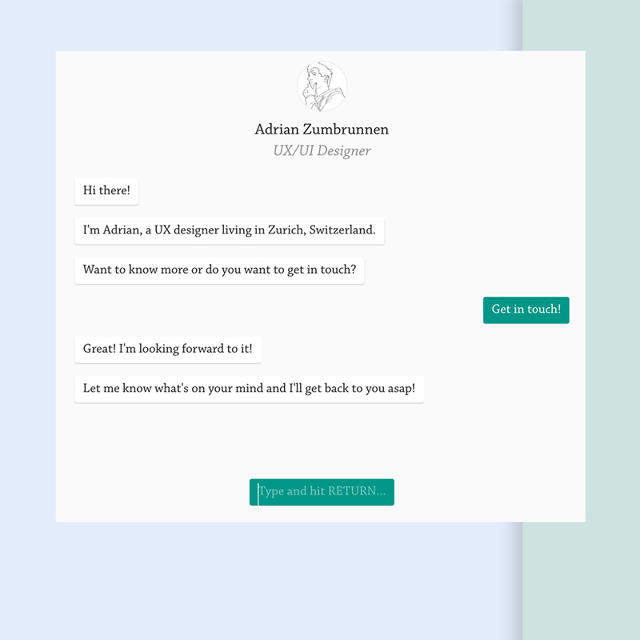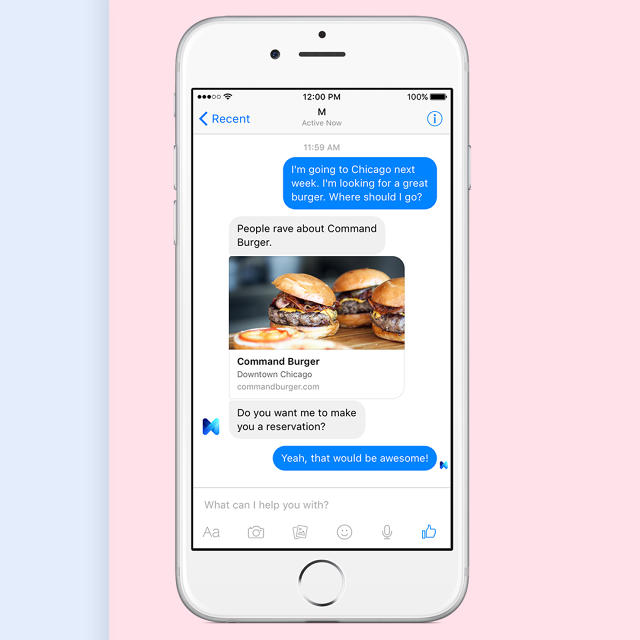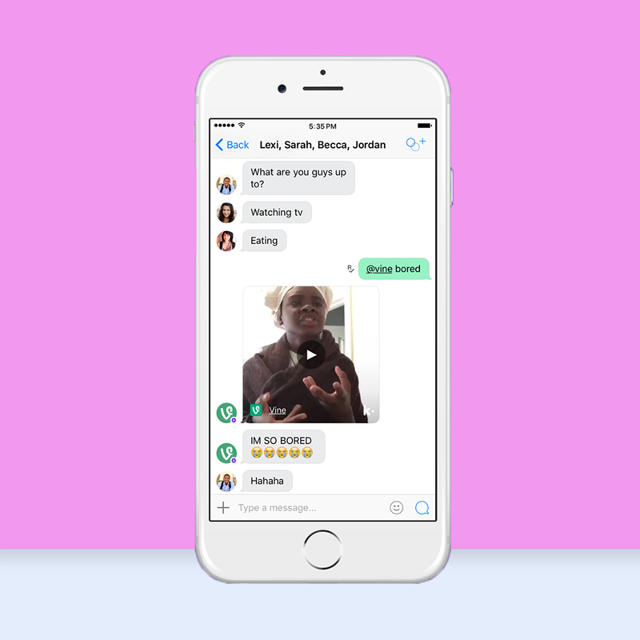Adrian Zumbrunnen was terrified of what conversational interfaces meant for him as a UX designer. "The conversational interface is scary," he says. "Will I still have a place in this industry when pushing pixels around is no longer the thing that designers do?"
So Zumbrunnen decided to confront his fear head on. He redesigned his personal website so that it ran off a Quartz-style chatbot. Instead of navigating menus, the chatbot asks visitors what they want to do, tells jokes, gives users links to personally curated design stories on the web (with optional chatbot commentary!), and even lets them send Zumbrunnen emails, just by typing to it.

Zumbrunnen admits part of him just did it as a joke. "The basic idea of conversational interfaces is to talk to people where they already are, so for a personal website, this seemed like a totally stupid thing to do," he says. But the visitors loved it. Traffic was up 1000%, and in just 48 hours, he got over 250 emails from people chatting with the bot—although Zumbrunnen admits there were a fair few of sexts in there. "People love to try to trick the bot."
Sexts aside, the Zumbrunnen chatbot was a hit. Why did visitors love it so much? "What I discovered building a chatbot was that I could actually convey something that a traditional personal website never could, which is my character and personality," he says. In other words, he created a virtual surrogate of himself. In the context of a personal website, a chatbot is a perfect fit, because the people who visit personal websites want to get to know you. And well-designed chatbots are the best way to do that.

Interfaces With Personality
It's not only indie designers like Zumbrunnen who are turning to chatbots to create surrogates of themselves. Big brands are pursuing the same approach. "Conversational interfaces (like chatbots) solve real UI/UX problems by making brands more human and approachable," says Robert Hegeman, digital creative director at Siegel+Gale.
This is why Microsoft has gone as far as to announce that the operating system of the future isn't Windows, but "conversation as a platform." Meanwhile, Facebook is pushing chatbots so hard that CEO Mark Zuckerberg says they're the key for businesses that want to sell to Messenger's 900 million monthly users.

Microsoft and Facebook aren't crazy. They recognize a real problem that chatbots (and recent advances in artificial intelligence) can solve.
Branded websites tend to feel slick and impersonal, because they're aimed at everyone. Chatbots can be custom-tailored to express different sides of a brand's personality based on who they are talking to. It's the difference between ordering a computer from the Apple online store and going inside one of its brick-and-mortar stores and talking to a salesman: a smile, a wink, or a nod reaffirms the conversation and makes it more personal. "From a brand perspective, this can mean that brands can extend and change their relationship with consumers—they can play a role versus being seen as just a product," says Siegel+Gale's Leesa Wytock.
Far From A Universal Fix
That doesn't mean chatbots are a salve for every UI problem, says Derek Vaz, group experience director at Huge. "I don't need a [conversational interface] to be able to simply understand someone's profile; that just needs good information architecture," he says. The same thing goes for design problems like online catalogs—good organizational design is more important than personality.
At the same time, poorly designed chatbots can pose an even bigger problem than conventional graphical web design, especially when they create confusion for users, or unintentionally obfuscate information, "Conversational interfaces can be powerful and effective when they are deployed in the right context and designed for the right use case," says Heiko Waechter from Huge. "On the flip side, these interfaces can potentially get in the way of a user or be viewed as gimmicky or even frustrating when they are not thoughtfully designed."
Another cautionary voice is from Sandijs Ruluks, founder of Froont, who suggests that the designers who should fear the rise of conversational interfaces most are the ones who are already bad at their jobs. For good designers, it'll just be another tool in their design toolkit. Either way, even if it ends up with some (bad) designers getting fired, "as long as it improves the user experience of the web, that's a good thing," he says.

Zumbrunnen agrees. After relaunching his personal website, he's no longer afraid of what chatbots mean for his design future. That's not to say he doesn't think the role of a web designer won't change.
"I think design in the future will be much more about writing than pushing pixels," he says, but as designers become better writers, the rest of their design work will improve too. Zumbrunnen argues that the best designers have always been good writers, who are able to clearly articulate what they're trying to do. The rise of chatbots will make the standard of graphic web design better, he says, because "writing about your designs gives you a better idea of what problem you're trying to solve." Something you have to do if you're building a chatbot.